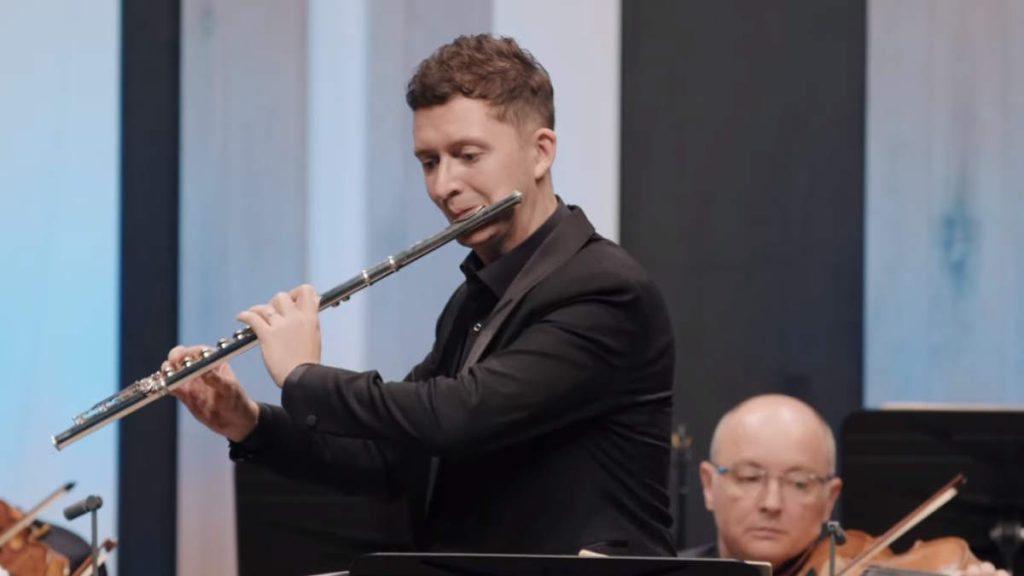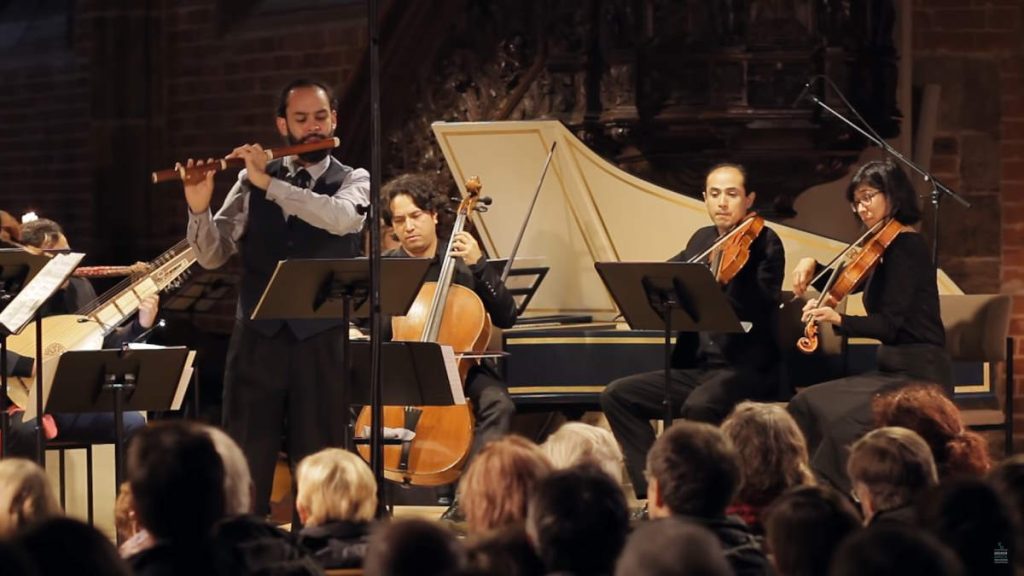With the German early music ensemble Bremer Barockorchester, the Chilean flutist and composer based in Bremen, Germany, Felipe Egaña Labrin performs Carl Philipp Emanuel Bach’s Flute Concerto in A minor, Wq. 166 (H. 430). Recorded in “Unser Lieben Frauen” Church, Bremen on November 23rd, 2018.
Performers
- Traverso: Felipe Egaña
- Violin: Leila Schayegh, Tomoe Badiarova, Meelis Orgse, Anna Dmitrieva, Franciska Hajdu, Valeria Caponnetto and Pierfrancesco Pelà
- Viola: Alice Vaz and Luis Pinzón
- Bassoon: Martin Jaser
- Basso Continuo: Nadine Remmert, Hugo de Rodas, Néstor Fabián Cortés Garzón, and Felix Görg
Carl Philipp Emanuel Bach’s Flute Concerto in A minor, Wq. 166 (H. 430)
Carl Philipp Emanuel Bach’s Flute Concerto in A minor, Wq. 166 (H. 430), is a notable work in the flute repertoire, exemplifying the expressive and innovative style of the composer. C.P.E. Bach, the second surviving son of Johann Sebastian Bach, was a pivotal figure in the transition from the Baroque to the Classical period in music. His Flute Concerto in A minor, composed in the mid-18th century, is a testament to his distinctive musical language and his influence on the development of the concerto form.
The concerto is typically structured in three movements, following the fast-slow-fast pattern common in the concerto genre. It is characterized by its emotional depth and the dramatic contrasts typical of the Empfindsamer Stil, or “sensitive style,” for which C.P.E. Bach was known. This style emphasizes expressiveness and the conveyance of deep feelings, often through sudden changes in dynamics, tempo, and harmony.

Program
With start times in the video:
- Fantasia: 0:00
- I. Allegro assai: 2:40
- II. Andante: 12:41
- III. Allegro assai: 21:51
Movements
- Allegro assai: In the first movement, marked “Allegro assai,” the music is lively and dynamic, with the solo flute part showcasing both technical virtuosity and expressive nuance. The movement features bold contrasts and a wide range of expressive elements, from forceful rhythmic figures to more lyrical passages.
- Andante: The second movement, typically marked “Andante,” presents a contrast with its lyrical and more introspective character. The flute’s melody in this movement is expressive and singing, supported by a delicate and sensitive orchestral accompaniment. This movement often highlights the soloist’s ability to convey deep emotion and subtlety of expression.
- Allegro assai: The final movement, often a lively “Allegro assai” or similar marking, concludes the concerto with energy and brilliance. It returns to a more vigorous and spirited character, with the flute engaging in playful and virtuosic interplay with the orchestra. This movement often features intricate passages for the flute, demanding agility and technical proficiency.
C.P.E. Bach’s Flute Concerto in A minor is notable for its imaginative writing for the flute, exploring the instrument’s capabilities in both expressiveness and technical demands. The concerto remains a favorite among flutists and is celebrated for its beauty, emotional depth, and the innovative spirit of its composer. Bach’s work in this concerto and others significantly influenced the development of the concerto form and the style of the Classical period.
Felipe Egaña Labrin

Felipe Maximiliano Egaña Labrin was born in Santiago de Chile. He studied for a degree in arts and music with a mention in transverse flute at the University of Chile. He continued his studies in early music with Wilbert Hazelzet at the Royal Conservatory of The Hague, in the Netherlands. Subsequently, he completed his Master’s and Konzertexamen studies with the Marten Root at the University of Arts in Bremen in Germany.
Felipe Egaña has participated with numerous early music ensembles such as the “Bremen Baroque Orchestra”, “The Bach Choir and Orchestra of the Netherlands”, “Le concert d’Apollon”, “The New World Baroque Orchestra”, “The Netherlands Bach Society “and” La dolcezza”.
As a soloist, he has participated under the leading of Rio Terakado, Václav Luks, Veronika Skuplik, François Fernandez, Dmitry Sinkovky, Stéphanie Paulet, among others.
He is a member of several chamber music ensembles such as “Les points cardinaux”, “Cancrizans duo” and “Los Temperamentos”. Along with the baroque orchestra “Nuevo Mundo”, as a soloist, he took part in concert tours in Chile and Mexico. Projects like the “European Baroque Academy of Ambronay” under the direction of Sigiswald Kuijken led the flutist to play in different European countries.
Felipe Egaña currently performs in international festivals and concert series in Germany, Belgium, the Netherlands, France, Italy, Mexico, and Chile.
Sources
- Carl Philipp Emanuel Bach on Wikipedia
- Felipe Egaña Labrin’s official website